E-Commerce | Epic Product Descriptions | Auto-Updating Copy | Automated Texts + Product Descriptions | Multilingual Product Texts
From Mail Order Business to Content Automation Pioneer - How KLiNGEL Generates 50 Million Multilingual Texts Every Month
Reading Time 11 mins | November 22, 2022 | Written by: Anne Geyer

Multichannel mail-order retailer KLiNGEL is a pioneer in the automation of product descriptions. The retailer operates 60 online stores in 12 countries and needs a lot of texts for its numerous products. Meanwhile, the medium-sized family business generates 50 million texts per month. A truly impressive figure! Even more so, since the company started out by generating only 200,000 automated texts! In the following, we'll tell you about KLiNGEL's impressive automation journey and what successes they're achieving.
KLiNGEL and content automation - how it all began
In 2016, KLiNGEL started a pilot project with AX Semantics for the automation of descriptive texts for selected products. For the test phase, the company initially selected two product groups: T-shirts and jackets.
These categories were particularly suitable for a test! Because in the T-shirts category there were many products with few distinguishing features, such as material, color or collar shape. In addition, the product data had a relatively simple structure. In the case of jackets, things looked different. Here, there were few products with many different features, such as zippers, buttons, pockets, and the degree of wind- and waterproofness. The composition of the data was significantly more complex.
First steps with automated content creation
First, KLiNGEL's four-person automation team analyzed the product descriptions written manually by copywriters. This uncovered the structures, phrases and product attributes used in the product descriptions. However, the texts showed a very high variance. Which means that the product attributes described varied from text to text.
After this initial survey, KLiNGEL conducted a data analysis of the product attributes, which answered the following questions: Which product attributes are available and are already in the system? Which attributes are actually needed for the product texts?
Without data, no content automation
After these preparatory steps, KLiNGEL started automated content creation. The existing texts and product data were meant to be the basis for the automation project. However, the automation team reached a first important realization:
Content automation stands and falls with data quality!
Jan Sanio, Application Manager at KLiNGEL
For one product feature, there were often dozens of variants in the product data. The automation team solved this problem by introducing default values in predefined product lists. This created a decisive advantage: The person entering the product data only selected the values instead of entering them as free text. This created uniform and unambiguous data sets – and led to optimized product data that was suitable for content automation.
The 5 automation challenges of KLiNGEL
After data optimization, the KLiNGEL team decided to fully automate all 22 product categories. However, this came with a few challenges:
- Challenge: Content
Connecting all product categories, defining the sentences for the product descriptions and conceptualizing the stories for each product category. - Challenge: Languages
Connection of all 9 company languages and thus the use of the full automation potential. - Challenge: Product data
Optimize product data for automation. - Challenge: Internal processes
Adjustment of internal processes and structures to make product data accessible at all times and to guarantee completeness of data. - Challenge: Interfaces
Create technical and physical interfaces. In the technical sense, software interfaces were created to ensure a smooth automation process. In the physical sense, contact persons were designated for the individual process procedures.
After a year and a half, the small automation team had achieved something amazing: there was now a product text for every product. In total, they generated 750,000 product descriptions in 9 languages.
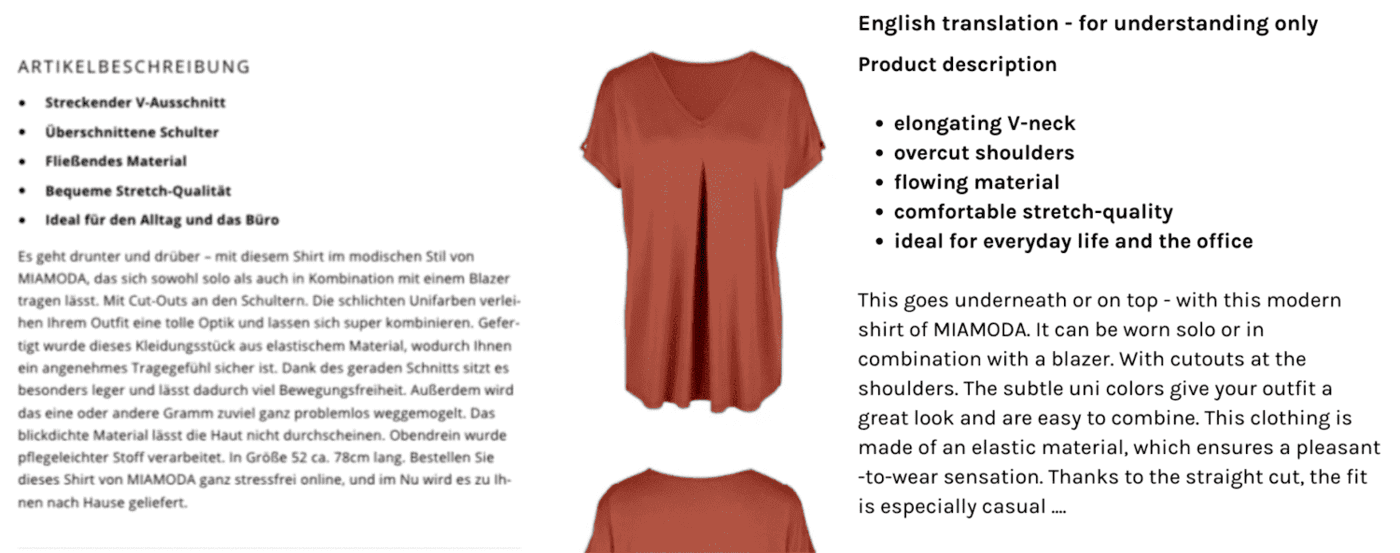
Successes through automated content creation at KLiNGEL
After this milestone, the team changed the text creation process. Instead of putting the manual text creation first, that entailed automation, the process now switched to automation first. This resulted in the fact that now automatically generated texts existed for each product. KLiNGEL had thus fully introduced content automation. And its positive effects quickly became apparent.
Greatly reduced time-to-market
The time-to-market was reduced enormously! Before automation, KLiNGEL was sometimes unable to launch products on the market in a timely manner, because the respective product texts were not yet written. Due to the manual writing of product texts, KLiNGEL was forced to accept a delay in the time-to-market of up to four weeks. Thanks to content automation, this time was reduced to a fraction: the creation of new product texts was now done within a maximum of 24 hours.
Cost reduction for translations and improved text quality
The automated texts were also longer and included more information, i.e., they were less generic than manually written texts. The cost of translations was also sharply reduced as a result of automation. This is because translations were now error-free, which also eliminated the need for proofreading.
More time for creative work
In addition, the content teams focused on other tasks and had more time available for creative work. For example, before automation, employees had to spend 70 to 80 percent of their working time on translating texts into all nine company languages. After automation, this expenditure of time fell to five to ten percent. Suddenly, teams had more time for other tasks, such as optimizing newsletters.
KLiNGEL also uses content automation for their print catalog
After automating their online product texts, KLiNGEL ventured into a new project: automating the product descriptions for their print catalog.
Not only were all descriptions of the German print product automated, but also the translations into all of the company's languages. The implementation was completed within a few months, as many of the processes for automating the online texts had already been implemented and rolled out. As a result, 300,000 product texts were created in nine languages in just six weeks.
The automation drastically reduced the expenses for translations – by up to 95 percent per double page.
Complete restart despite success
In 2020, KLiNGEL once again dared to make a fresh start and launched a rollout of new systems and process flows.
In the following, we briefly explain the three issues KLiNGEL has solved in recent years and the successes they have achieved as a result.
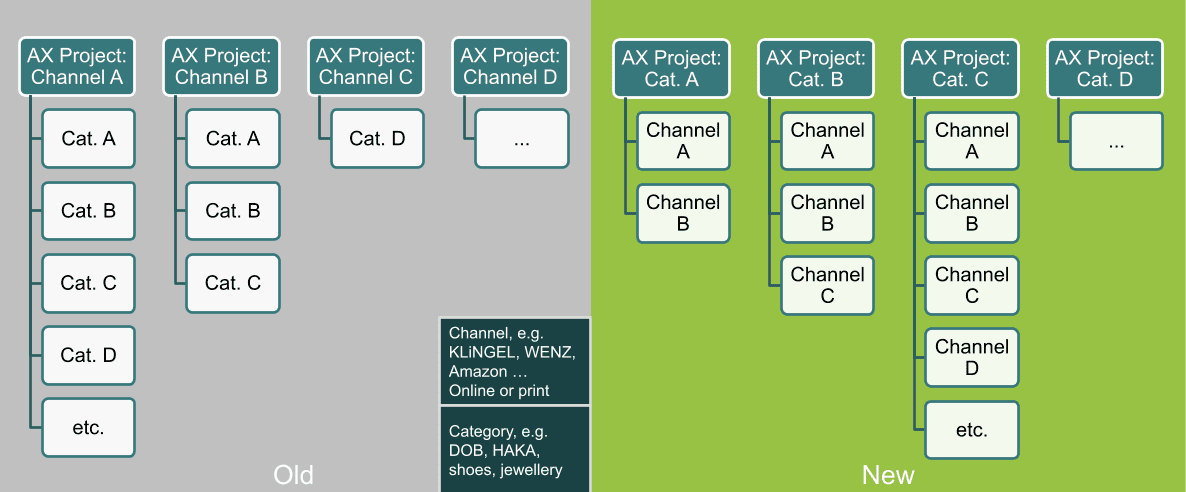
1. Transpose project organization to AX Semantics
KLiNGEL completely transformed their project organization of content automation. Until 2020, the company organized an automation project by stories, or rather channels (such as KLiNGEL.de, Amazon, print catalog, etc.). The individual categories, such as clothing or jewelry, were grouped into these stories.
The problem
By publishing content on different channels, the content team always created copies of the individual categories and then applied them to all channels. As a result, different projects had exactly the same content. This also made it difficult to make text changes, such as adjusting product features.
The solution
KLiNGEL therefore reversed the project structure and no longer divided the projects by channel, but by category. In total, the automation team built 22 category projects according to this principle.
The effect
Synergetic effects set in as a result. Project management became easier because the operating principle was the same for all output channels. This enabled the team to make changes centrally from now on.
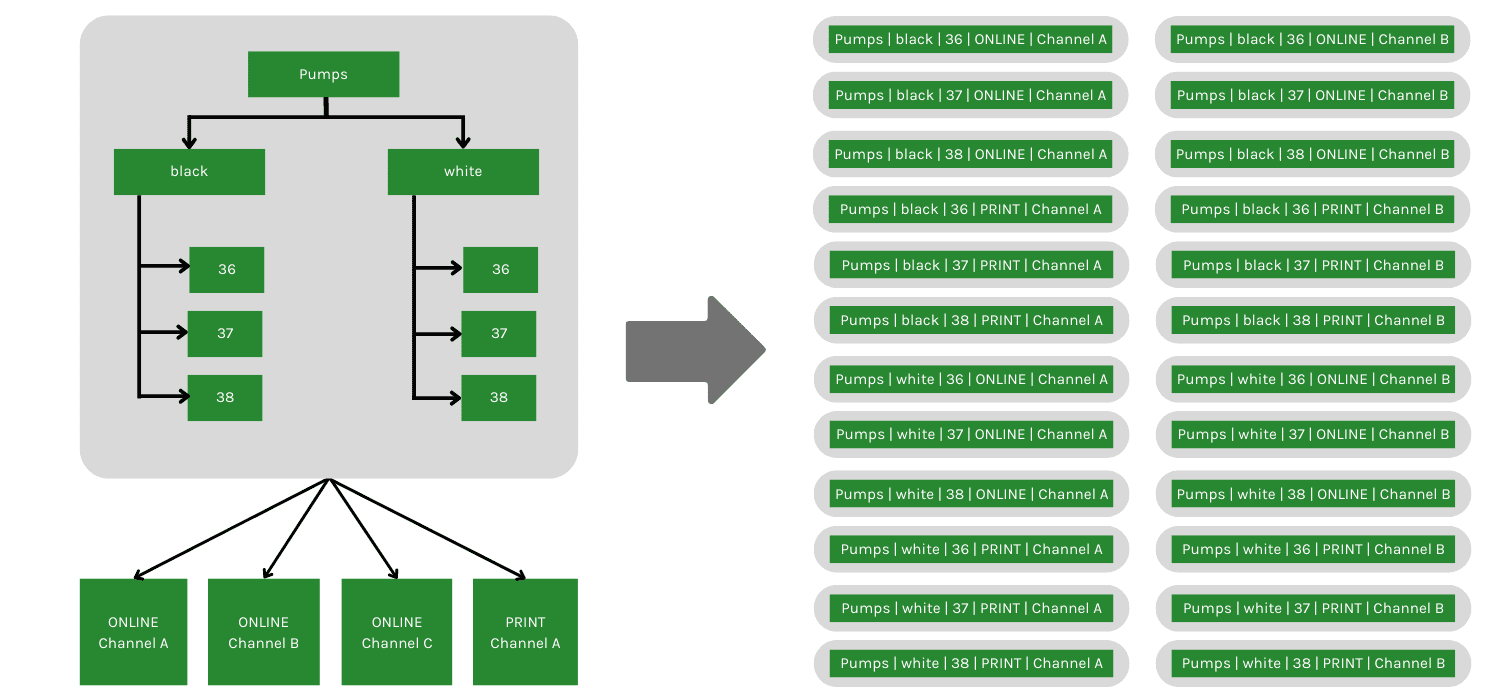
2. Unequivocal and flat data sets
The problem
The automation team faced the challenge of setting up sufficiently diverse attributes in the product data. This was because one data set listed all possible variants of a product group. A precise listing of the product attributes was thus not possible, and more generic terms were used (such as leather, instead of the exact type of leather). As a result, the associated product texts also remained imprecise.
The solution
So KLiNGEL reorganized their data sets. Since then, they no longer use data sets on the product level, but on the SKU level for content automation. Therefore, attributes such as destination (online or print) and the channel are defined.
The effect
This means that it is already possible to see in the data in which channel the product text will appear at the end. Filtering is also easier due to the division according to stories. Thus, each channel gets the text intended for it, since the data set is designed precisely for this purpose.
3. Bilingual data sets
As already mentioned, KLiNGEL is an internationally operating company.
The problem
But the employees in the individual countries were working with different data sets. The automation team therefore set itself the goal of setting up the data sets in such a way that they would serve as the basis for each company language.
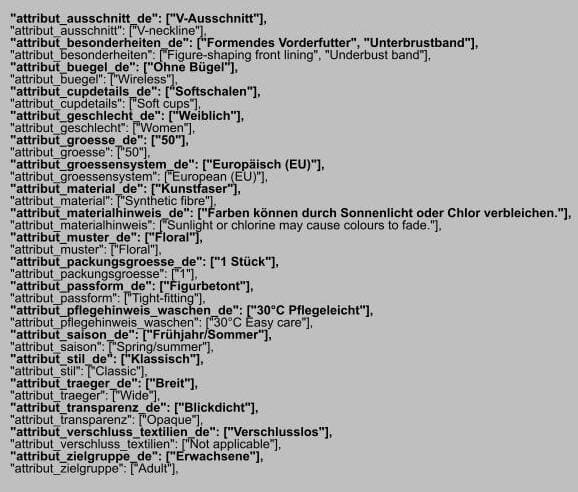
The solution
KLiNGEL therefore decided to distribute each SKU with bilingual attribute texts to the AX Semantics platform – with a German attribute and the corresponding language attribute. The underlying logic of text generation was thus language-independent.
The effect
For example, this had a positive effect on the translation effort, which was now drastically reduced. This is because the employees in the other countries now only had to translate the underlying sentence structures. This made it easier to maintain and correct the texts. Since the sentence structure logic was based on the values from the German AX project, changes were made centrally for all languages.
Scaling Effects - KLiNGEL Generates 50 Million Texts Every Month
KLiNGEL looks back on an automation journey of several years and continues to record great successes since the rollout in 2020, which are reflected in impressive figures:
For example, the mass of texts generated is enormous! KLiNGEL currently produces 50 million texts or text updates every month. Text updates, because the rollout changes a lot of product data, which results in new texts.
Another impressive figure: In total, the KLiNGEL team has 95% of all their SKUs equipped with individual and specific texts. Only five percent of products still receive generic or manually created text. This is not least due to the nature of these products. Because content automation is not always worthwhile. For example, if product texts are not scalable, as is the case with very niche products. Or when it comes to very special products that are also only available in little amounts.
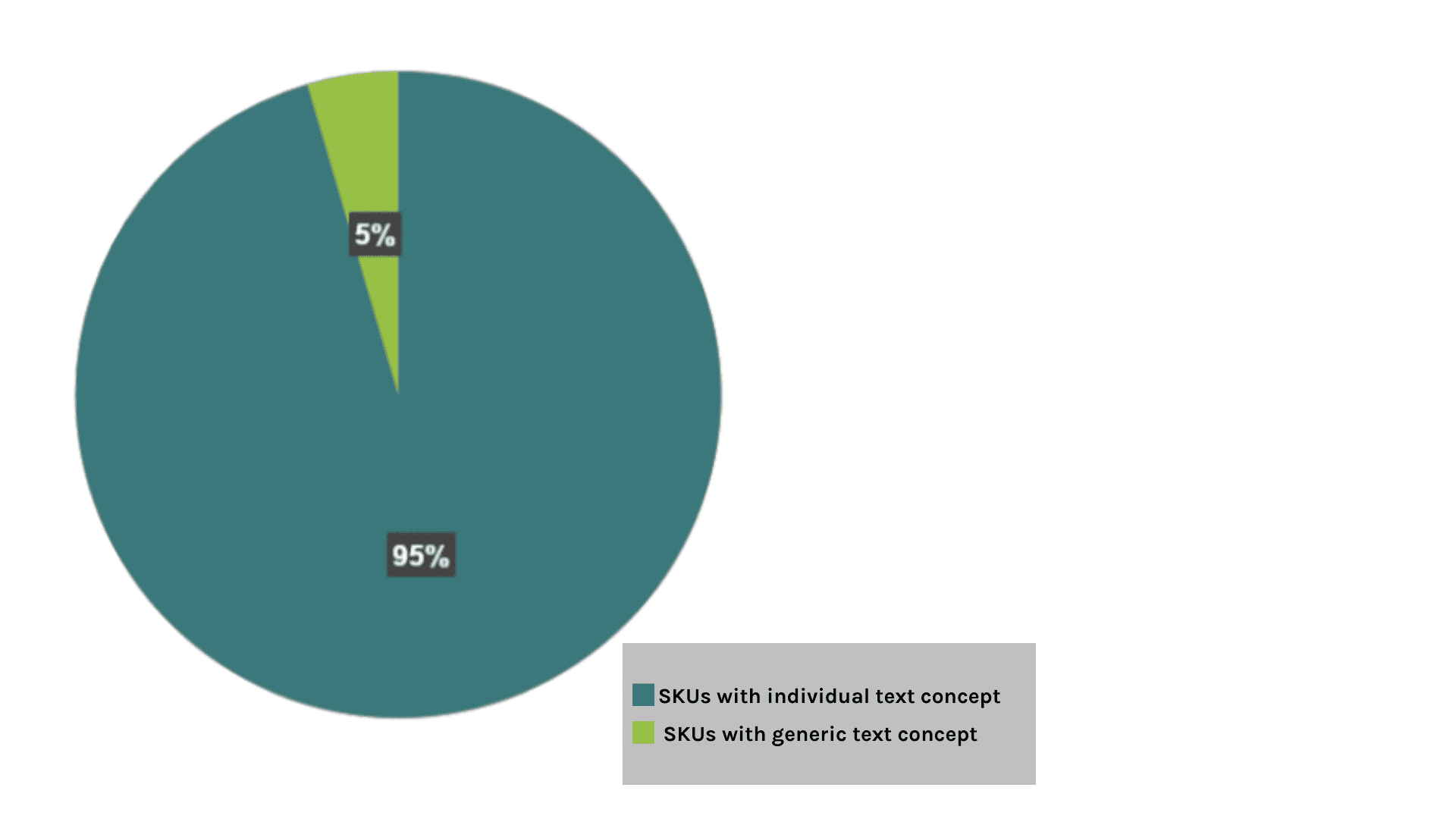
Outlook - What KLiNGEL still wants to achieve
Despite these impressive results, KLiNGEL still plans to further improve with the help of automation and does not want to rest on its laurels of recent years. Specifically, the following three projects are on the agenda:
1. Personalization of product texts
In order to offer customers an optimal customer experience, KLiNGEL is striving to personalize product descriptions. Since website users approach a product page with different product knowledge and motivations, content personalization makes sense. Addressing individual buying interests leads to more conversions, i.e. sales.
2. Improve readability of online texts
KLiNGEL also plans to improve the structure of the online texts in order to break up text blocks. This can be achieved, for example, by dividing the text into logical paragraphs and inserting subheadings. Also the fulfillment of SEO requirements will soon play a greater role in text optimization. Last but not least, this improves the customer experience and thus customer satisfaction.
3. Automated texting of product category pages
After the optimization of the product detail pages, KLiNGEL opts for automated category page descriptions. These are particularly suitable for achieving greater visibility in search engines and thus increasing traffic through organic search.
